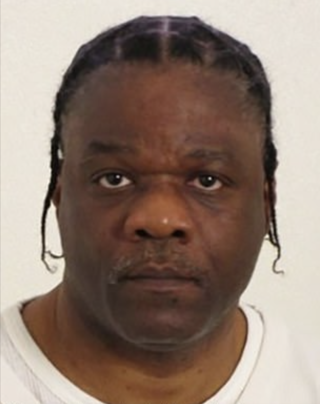Genetics
New DNA Evidence Suggests Executed Man Was Innocent
Ledell Lee was executed in 2017, but new evidence points to a different culprit.
Posted May 8, 2021 Reviewed by Jessica Schrader
Key points
- For more than 20 years, Ledell Lee maintained his innocence in the brutal murder of Debra Reese, but he was executed in 2017.
- Work from the Innocence Project and ACLU revealed serious flaws in his criminal trial, as well as a lack of DNA evidence tying him to the murder.
- Earlier this week, new DNA evidence taken from the murder weapon revealed the genetic material of a different man.

The Innocence Project, a nonprofit legal organization committed to exonerating individuals wrongly convicted of crimes, has proven the innocence of more than 375 individuals using DNA evidence not available at the time of conviction. Ledell Lee is the most recent individual on the path towards full exoneration due to efforts from the group.
While an exoneration might mean a great deal to Lee's family, it's too late for him—he was executed by lethal injection in April of 2017.
In 1993, Lee was convicted of murdering and raping Debra Reese in Jacksonville, Arkansas, a suburb of Little Rock. He was later sentenced to death. Throughout his trial, and even until the moments before his death, Lee steadfastly maintained his innocence. “My dying words will always be as it has been: I am an innocent man," he told the BBC during an interview the day before his execution.
In the weeks prior to his execution in 2017, the Innocence Project and the American Civil Liberties Union (ACLU) took on Lee’s case and filed for an emergency stay of execution so that DNA testing could be done. However, a federal judge denied the motion, stating that Lee “simply delayed too long."
Even after his death, the Innocence Project and ACLU continued to investigate and gather evidence for Lee's case. Earlier this week, and in response to a lawsuit, the city of Jacksonville finally agreed to conduct new testing of DNA evidence taken from the bloody club (the murder weapon) found in Reese's bedroom. The DNA analysis revealed a shocking result: the genetic material found on the weapon did not match Lee, but rather another male. The identity of the other male remains a mystery, as comparisons against the national criminal database maintained by the FBI have not yet yielded a match.
As reported by the Innocence Project, the original criminal trial of Lee was flawed in several serious ways. Lee actually had two trials; the first resulted in a hung jury, and the second resulted in a conviction. During the first trial, the defense presented numerous alibi witnesses whose testimony suggested that Lee could not have committed the crime. Inexplicably, however, the defense during the second trial called no alibi witnesses. Furthermore, one of Lee's publicly-appointed attorneys suffered from a substance abuse disorder and admitted to being intoxicated during several of Lee’s hearings.
As with most criminal trials, the prosecution relied heavily on the use of eyewitness testimony. In fact, it was the core evidence discussed by the prosecution during their closing arguments. In Lee's case, there were no eyewitnesses to the actual murder. However, three witnesses were questioned by detectives and selected Lee from a photo array (known colloquially as a "line up") identifying him as the man they had seen in the neighborhood of Reese's home around the time that the murder occurred. These witnesses then testified at trial that Lee was the man they had seen that day.
While eyewitness testimony might be persuasive to jurors, the reality is that it is often completely inaccurate and highly susceptible to manipulation (e.g., Loftus, Miller, & Burns, 1978). Of the 375 convictions the Innocence Project has had overturned on the basis of new DNA evidence, the overwhelming majority were originally based on flawed eyewitness testimony.
In 2019, famed psychologist Dr. Jennifer Dysart was hired to provide her expert opinions regarding the eyewitness identifications used to convict Lee. As stated in her detailed report, numerous aspects of the identification process were flawed. In particular, the detectives administering the photo arrays to the eyewitnesses already knew that Lee was their suspect. Contemporary guidelines (e.g., IACP, 2006), and even some state laws, now require that police officers conducting the photo array proceedings should not know who the suspect is. Without this "double-blind" approach, there is always a possibility that an officer can influence the witness's selection, even if only inadvertently or subconsciously. For example, an officer might smile, grunt, or nod when a suspect is being considered by the eyewitness (e.g., Zimmerman et al., 2017). The photo array proceedings in Lee's case were not recorded, so we can't know for certain if detectives placed an undue influence on the eyewitnesses.
Despite this new DNA evidence, the potentially flawed testimony presented at trial, and several procedural issues, Arkansas Governor Asa Hutchinson defended the execution of Ledell Lee at a news conference earlier this week, calling the DNA evidence “inconclusive,” and focusing instead on the fact that the “the jury found him guilty based upon the information that they had.”
Lee is far from the first individual to be executed under questionable circumstances. For example, Carlos DeLuna was executed in 1989 for the alleged murder of a gas station attendant, but a six-year investigation by the Columbia Human Rights Law Review discovered that he had almost certainly been confused with another man, a violent criminal who happened to share the name Carlos. Additionally, Cameron Todd Willingham was executed in 2004 for allegedly having caused a fire that killed his three young daughters. Years after the execution, new evidence emerged that conclusively showed that he could not have set the fire.
As it stands today, 27 states, as well as the federal government, still allow for the death penalty as a possible criminal sentence. The case of Ledell Lee will no doubt provide fodder for those seeking to have it abolished nationwide.
References
Loftus, E.F., Miller, D.G., & Burns, H.J. (1978). Semantic integration of verbal information into a visual memory. Journal of Experimental Psychology: Human Learning and Memory, 4, 19–31.
Zimmerman, D. M., Chorn, J. A., Rhead, L. M., Evelo, A. J., & Kovera, M. B. (2017). Memory strength and lineup presentation moderate effects of administrator influence on mistaken identifications. Journal of Experimental Psychology: Applied, 23(4), 460–473.




